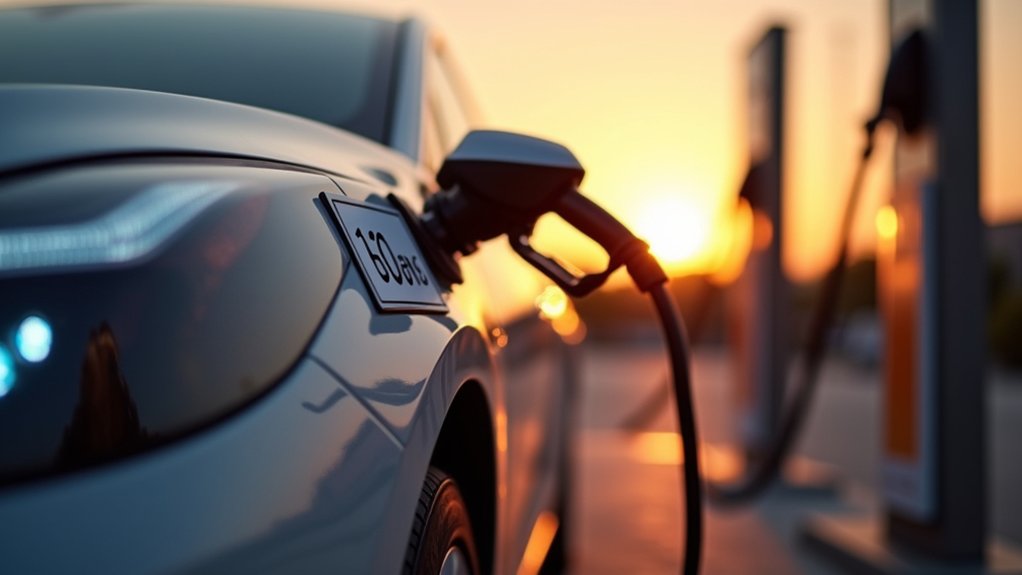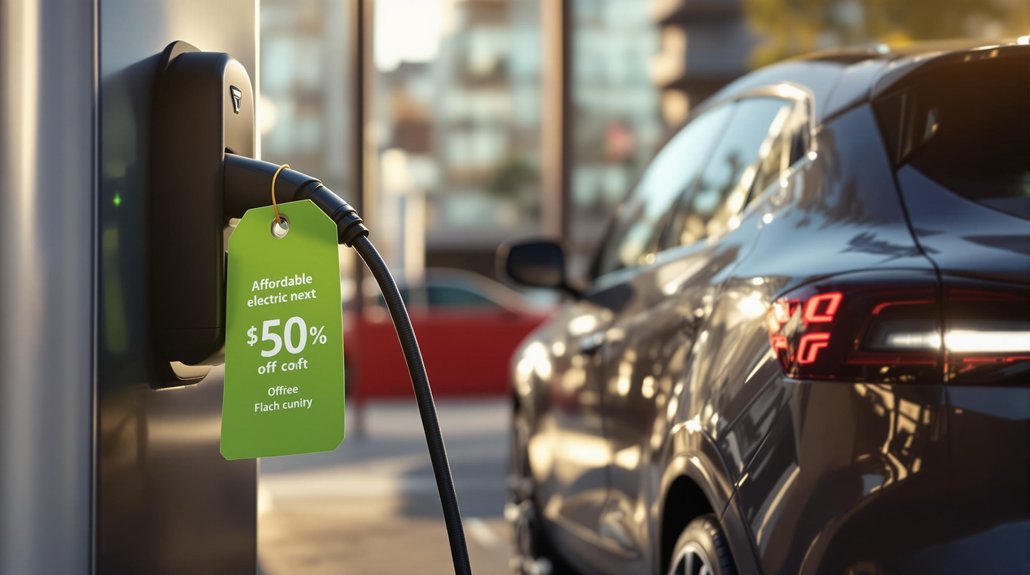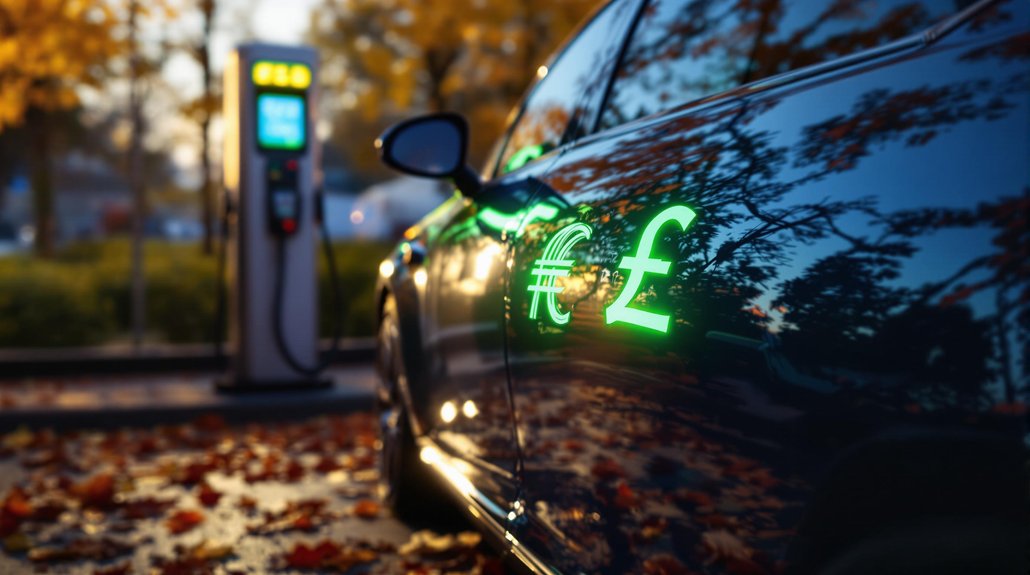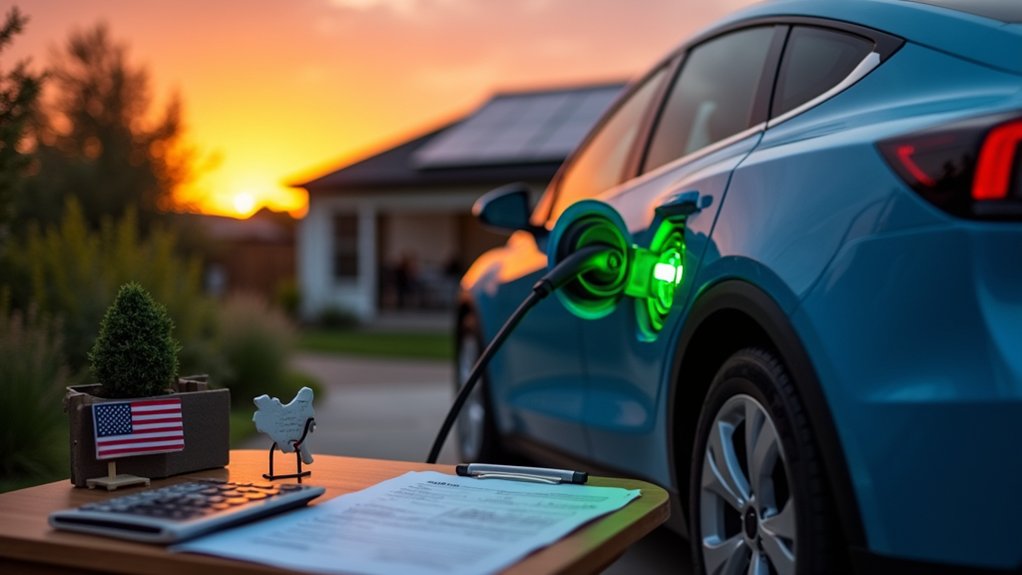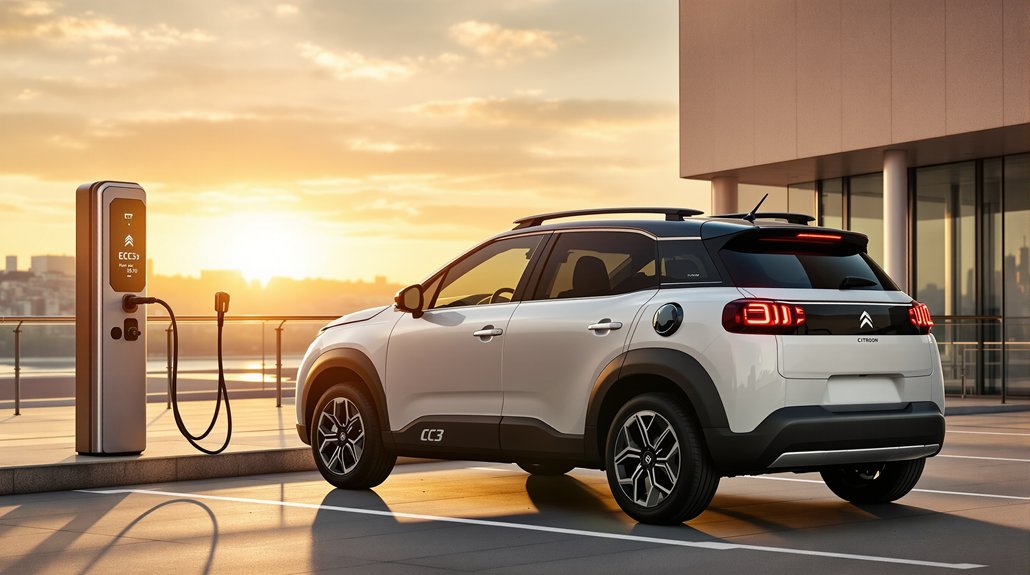While the automotive industry undergoes a transformative shift toward electrification, electric vehicles are finally reaching price points that mainstream consumers can afford. The dramatic 90% reduction in battery costs since 2008 represents perhaps the most notable factor driving this affordability revolution. What once constituted nearly two-thirds of an EV’s manufacturing expenses now accounts for roughly 40% of the sticker price, fundamentally altering the economics of production.
Electric vehicles now reach mainstream affordability thanks to a 90% battery cost reduction since 2008, transforming production economics.
Market competition has intensified considerably, with over 100 electric models projected to enter the American market by 2025. This proliferation of options has created downward pressure on pricing, as evidenced by Tesla and Ford’s strategic shifts toward economy-friendly models. The industry’s competitive landscape now includes numerous smaller manufacturers introducing innovations that challenge established players’ pricing strategies. The price gap between electric and gas-powered vehicles has significantly narrowed from $17,000 to just $5,000 in two years.
Government policies have notably influenced the affordability equation. Federal tax credits of up to $7,500 effectively reduce consumer costs, while regulatory frameworks increasingly disadvantage internal combustion engines. Many EVs are expected to be priced under $40,000 with these federal incentives included. China’s multi-billion-dollar subsidies have accelerated EV adoption and created manufacturing efficiencies that benefit global markets. I’ve observed similar incentive structures emerging across global markets, including Brazil and Indonesia, suggesting a coordinated international push toward electrification.
The total cost of ownership calculation increasingly favors EVs. The elimination of oil changes, spark plug replacements, and other traditional maintenance requirements translates to substantial savings over a vehicle’s lifespan. When combined with electricity’s lower cost-per-mile compared to gasoline, these operational savings can offset higher initial purchase prices.
Recent economic developments have further enhanced affordability. The 42% year-over-year increase in sub-$30,000 inventory provides more options for budget-conscious consumers. Interest rate reductions have improved financing terms, while cooling inflation has moderated price increases across the automotive sector.
Manufacturing innovations continue to drive costs downward. Simplified vehicle designs with fewer mechanical components reduce assembly complexity, while economies of scale from mass production lower unit costs. The vertical integration strategies employed by leading manufacturers further reduce supply chain expenses, creating a virtuous cycle of affordability that promises to accelerate EV adoption in coming years.
